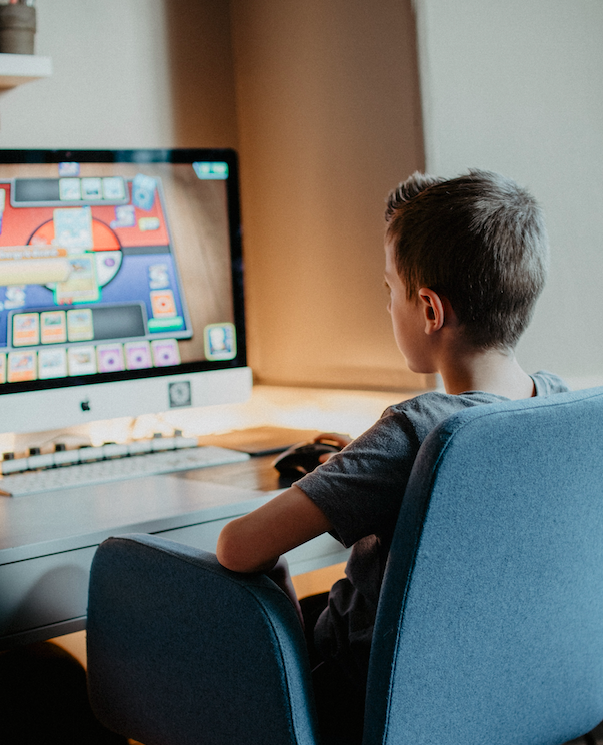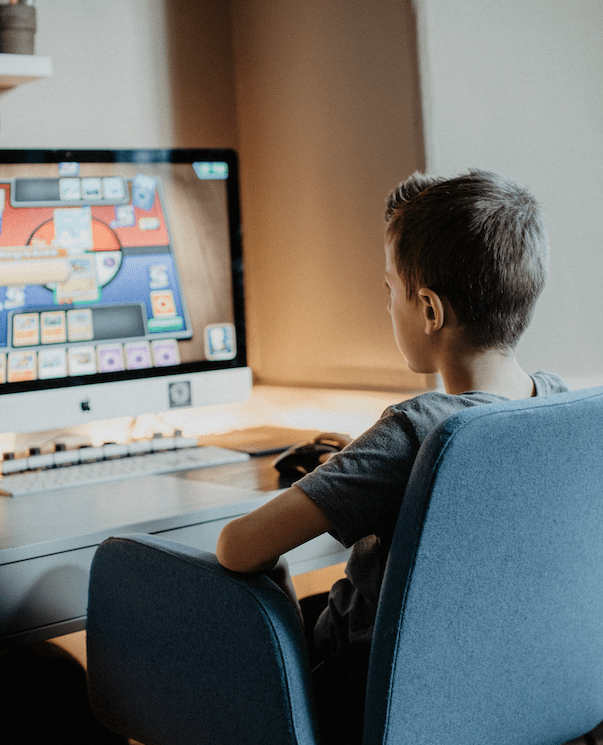
Before diving into a discussion with your kids about the internet, open yourself to questions and provide honest, transparent answers. Kids are naturally curious, so saying, “Don’t go on the internet!” without some context will only spark their interest. Talk to them multiple times about the dangers, answer questions, and help them understand the positive benefits of the internet along with the serious risks. Here are four ways you can safeguard your children and improve their safety online.
1. Keep Personal Information off the Web. A study from Cox Communications and the National Center for Missing & Exploited Children found many teens are not concerned about sharing personal information online. The majority thought posting photos or other personally identifiable information on social media was not unsafe, and nearly half were not worried about other people using their info/images in unapproved ways. Given the prevalence of Instagram, TikTok, and other social accounts, the results of the survey are unsurprising.
There’s considerable peer pressure to join and frequently post on these accounts, and their usage can cause addictive behaviors. However, all this personal data and exposure can lead to dangers. Online predators can view these accounts by pretending to be someone in the teen’s age group. Private messaging capabilities can give them easy access to start dialogues, which can then turn towards offers of in-person meetings. Encourage your kids to wait until they’re 18, and at the very least, check their social account settings to ensure they’re “private.”
2. Check Their Phone Usage. Giving your child their first phone is a big step, both for them and for your trust. The ideal age for a phone varies and depends on the maturity level of the child. Before handing out the first Android or Apple phone, talk to your kids about the expectations. Reinforce that the phone is theirs, but it’s also yours and you can check it whenever you want. Set rules for using the phone. Do they take it to school? Can they go to bed with it charging on their nightstand? Kids need structure and guidelines.
Tracking their phone usage should be a mix of checking it manually and using technology tools. Kids can of course delete inappropriate texts and Google searches, so you need to track what they’re doing. That’s where some technology comes in handy.
3. Use Tech Tools. To effectively help kids navigate the internet, you need to embrace some technology tools. Nothing complex, just some new tools that monitor your kid’s phone and computer usage. Here are a few monitoring programs worth looking into:
- FamilyShield by OpenDNS is a tool that blocks certain inappropriate domains on your entire home network. This includes proxy servers, sexual content, and violent sites.
- Qustodio is a parental tool for phone use that features social media tracking, smart filtering, and the ability to manage screen time remotely.
- Kidlogger (currently just for Android) and other similar tools are useful for adding controls to usage, and seeing exactly what functions kids are doing, and what they’re typing. This and other apps allow parents to remotely view any photos the kids take, their location, and to record any incoming or outgoing calls.
There are many monitoring tools available. Do your research and read reviews to find trusted and easy-to-use services.
4. Help them Browse Safely. Kids are going to act like, well, kids. They’re unpredictable, and of course, don’t have the minds of the typical adult. They might go to Google and search up words they think are innocuous, but the results might be pornographic or violent. Unfortunately, there are a lot of people online that use coding to warp search results, so for example, a search that pulls up a site that looks like toys might lead to somewhere inappropriate. Give your kids guidance on how to search properly, and let it be known you’re open to talk if they find something inappropriate.
A great alternative to Google and other search engines is to use the family-friendly search engine GOFBA. GOFBA was established to provide users with a safe haven on the internet. It strives to eliminate pornography, violence and other inappropriate material, and constantly scans their results for fraudulent coding designed to trick users into seeing inappropriate websites. GOFBA also has secure Chat, Email, File Transfer and Storage.
Keeping kids entirely off the internet is unrealistic. Many schools use Google Classroom or other online tools that kids must utilize. All in all, there’s a time and place for internet usage; the younger the child, the more personal supervision. Safety begins by helping your kids focus on practicing good internet habits and having a better understanding of the online dangers.











